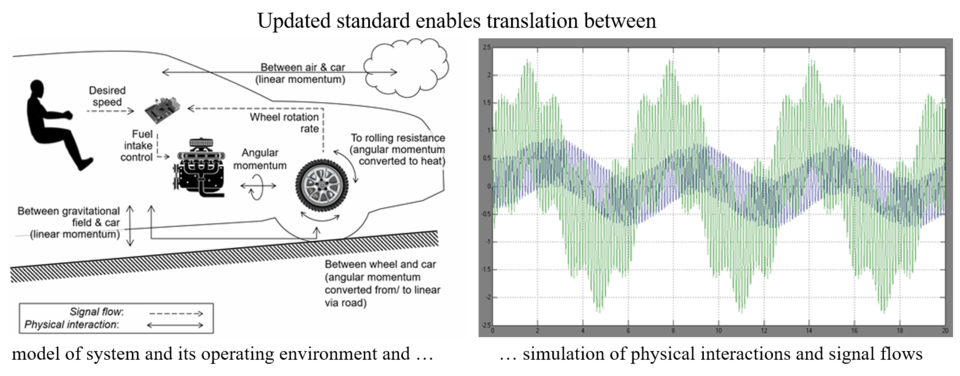
Disclaimer: Any mention of commercial products within NIST web pages is for information only; it does not imply recommendation or endorsement by NIST.
The Object Management GroupⓇ (OMGⓇ) recently released an update in May 2021 to a standard called SysML Extension for Physical Interaction and Signal Flow Simulation (SysPhS). It specifies translations between:
- Overall systems engineering models, including operating environments, expressed with the Systems Modeling Language (SysML)
- Simulations of physical interactions and signal flows between components of the system, as well as things in its operating environment
Previously, system engineers used SysML to create a model of an intended system and its operation, then described to engineers in other domains – electrical, mechanical, production, etc. – where their work fit into the overall system model. The other domain engineers used their own tools to specify system components and simulate behavior. However, differences between the systems model and the many simulation models often produced inconsistencies that were difficult for engineers to resolve.
NIST's Conrad Bock (now in Smart Connected Systems, Communications Technology Laboratory) played a leading role in addressing this problem. Bock worked with stakeholders at the Object Management Group and other organizations to establish a need for a standard. He and other NIST researchers then conducted research underlying the standard, validated it through software, documented the standard, and shepherded it through the OMG standardization process. The resulting standard was published in July 2018. Since then, NIST researchers interacted with industry to ensure that the standard can be implemented and used effectively, and identified additional needs addressed in the current update.
The update improves system engineering reliability. It shows how physical interactions and signals work together in a single system. It also includes a method for debugging physical interaction models, which are more difficult than signal flow models, due to bidirectional interactions between components.

